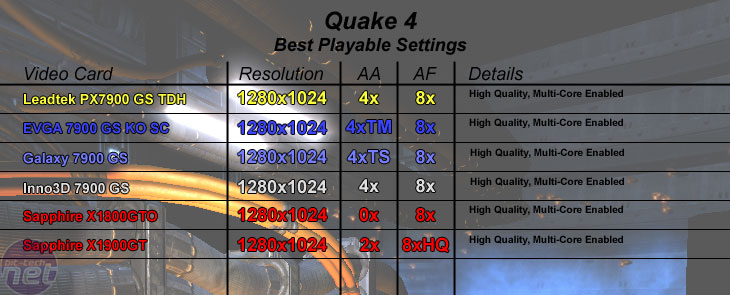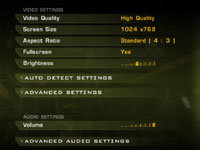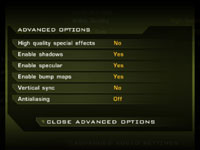Quake 4
Publisher: ActivisionWe used the full retail version of Quake 4 patched to version 1.3.0. It is the fourth game in the Quake series, based on the technically sound Doom 3 engine. However, unlike Doom 3, we found that the game benefits from at least 2x anti-aliasing, and the experience with anti-aliasing at a slightly lower resolution was better than increasing the resolution with no AA applied.
Both anti-aliasing and anisotropic filtering were controlled from inside the game. When you select "High Quality" mode, 4xAF is automatically enabled, and when the "Ultra Quality" mode is enabled, 8xAF is automatically applied to the scene.
We did a manual run through from a five minute section of the Nexus Hub Tunnels level and found that a minimum of 15 frames per second and an average of 45-50 frames per second in our test section was deemed to be playable across the rest of the title.


Both ATI cards suffered form some annoying stuttering that seemed to occur every time I fired a grenade launcher for the first time in a new room. Neither card delivered a particularly appealing gaming experience in comparison to the Leadtek GeForce 7900 GS, nevermind the faster clocked cards from EVGA and Galaxy.

MSI MPG Velox 100R Chassis Review
October 14 2021 | 15:04








Want to comment? Please log in.